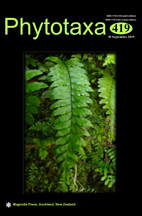Abstract
During a revision of the genera Cutandia and Catapodium in Iran (Poaceae: subtribe Parapholiinae), the occurrence of Cutandia rigescens was confirmed for the first time on sand dunes along the southern shore of the Caspian Sea in the northern part of the country. Twenty-five important morphological and anatomical characters were examined in an attempt to separate this species from Cutandia dichotoma, C. memphitica and Catapodium rigidum, similar taxa already recorded from Iran. In addition to the morphology of the glume, lemma and palea, the most diagnostic characters proved to be: size and shape of long cells in the intercostal zone of leaf epidermis, size of short cells and long cells in the costal zone of the leaf epidermis, size of angular prickles in the leaf epidermis, number and size of vascular bundles in a cross-section of the culm, the presence or absence of parenchymatous cells in the center of the culm and number of florets. Distribution map for Iran, together with vegetation data were presented for all four species.

